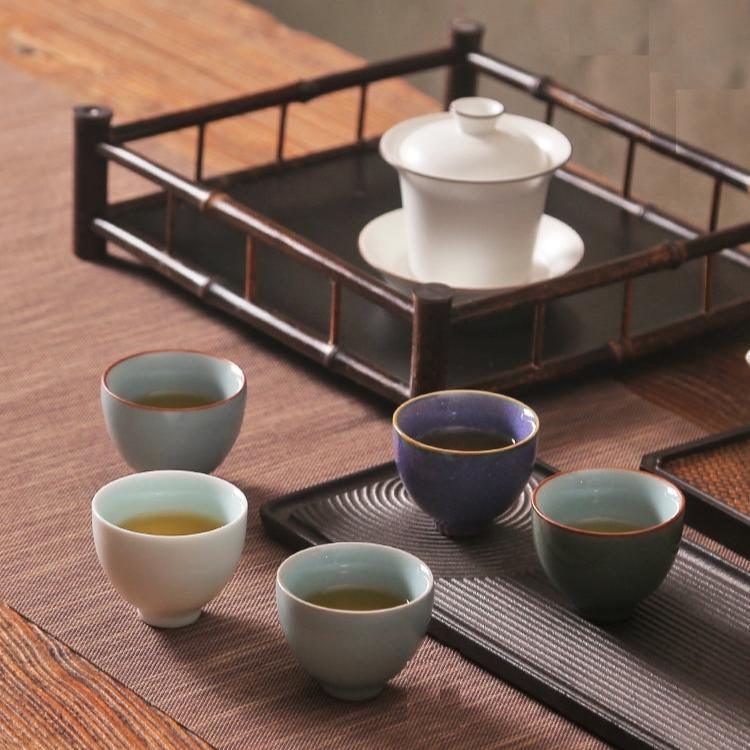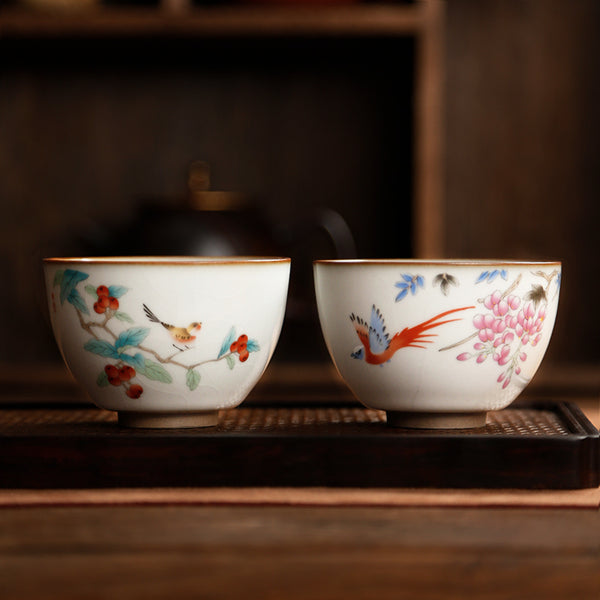
Timeless Elegance of Chinese Ru Ware for Tea Drinking
Share
Among the most treasured ceramics in Chinese history, Ru ware occupies a near-mythical status. Its ethereal beauty, refined technique, and scarce surviving examples make it one of the most revered and enigmatic wares in the history of Chinese porcelain.
A Glimpse into History
Ru ware originated during the Northern Song Dynasty (960–1127), a period celebrated for its profound artistic and intellectual achievements. It was produced exclusively for the imperial court for a brief period—possibly less than two decades—at kilns in Ruzhou, Henan province, hence the name.
Its rarity is legendary: fewer than 100 intact Ru ware pieces are known to exist today, most housed in top museums and imperial collections around the world. This scarcity has only elevated its status among collectors and connoisseurs.
The Art of Subtle Perfection 
Ru ware is prized for its:
-
Celadon glaze in soft, bluish-green tones reminiscent of jade
-
Fine crackle patterns, not as flaws, but deliberate decorative features
-
Elegant simplicity of form: dishes, bowls, and brush washers with refined curves
What sets Ru ware apart is not flamboyance, but subtlety and restraint. The ceramics are known for their delicate bluish-green glaze, often compared to the color of jade or the sky after rain. This glaze was achieved using a sophisticated high-temperature reduction firing, producing an effect described as “like the sky after rain” — luminous and serene. The delicate web of crackles (called crazing) deepens over time, adding to the ware’s character.
One of Ru ware's most distinctive features is the “crackled” glaze pattern—a web of fine, intentional cracks that form as the glaze and body cool at different rates. Far from being a flaw, this pattern was revered by the Song aesthetes for its natural elegance and quiet dynamism.
Shapes were typically simple—dishes, bowls, and brush washers—emphasizing pure form and proportion. These minimalist silhouettes allowed the glaze to take center stage, revealing subtle variations and pooling effects.
A Legacy of Inspiration
Though production ceased with the fall of the Northern Song, Ru ware's influence endured. Later dynasties, particularly the Yuan, Ming, and Qing, tried to revive its techniques and aesthetics. Yet even with technological advances, few reproductions captured the soul of the originals.
Today, Ru ware is more than an object of beauty—it is a symbol of the Song Dynasty’s refined philosophy, where simplicity, naturalism, and quiet contemplation defined artistic excellence. For scholars, collectors, and admirers alike, Ru ware represents the pinnacle of Chinese ceramic artistry: an embodiment of grace, rarity, and poetic understatement.
A Journey of Discovery and Appreciation
Modern Ru ware tea cups and teapots carry forward the legacy of Song Dynasty elegance with contemporary craftsmanship. These pieces echo the soft celadon glaze and delicate crackle patterns of the originals, while embracing modern forms suited for daily tea rituals. Blending history with function, they offer a serene, tactile experience that honors the past while enriching the present.
Check out our shop to discover varies options of Ru Ware teaware, and grab a piece of excellence to enlighten your day.

